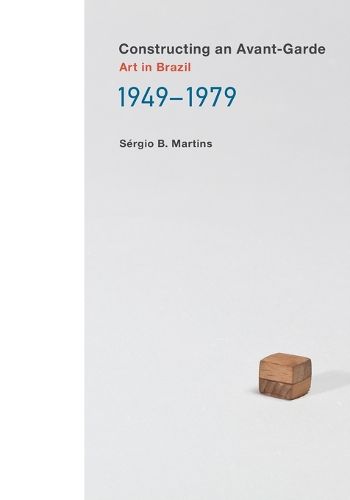Readings Newsletter
Become a Readings Member to make your shopping experience even easier.
Sign in or sign up for free!
You’re not far away from qualifying for FREE standard shipping within Australia
You’ve qualified for FREE standard shipping within Australia
The cart is loading…






How Brazilian postwar avant-garde artists updated modernism in a way that was radically at odds with European and North American art historical narratives.
Brazilian avant-garde artists of the postwar era worked from a fundamental but productive out-of-jointness. They were modernist but distant from modernism. Europeans and North Americans may feel a similar displacement when viewing Brazilian avant-garde art; the unexpected familiarity of the works serves to make them unfamiliar. In Constructing an Avant-Garde, Sergio Martins seizes on this uncanny obliqueness and uses it as the basis for a reconfigured account of the history of Brazil’s avant-garde. His discussion covers not only widely renowned artists and groups-including Helio Oiticica, Lygia Clark, Cildo Meireles, and neoconcretism-but also important artists and critics who are less well known outside Brazil, including Mario Pedrosa, Ferreira Gullar, Amilcar de Castro, Luis Sacilotto, Antonio Dias, and Rubens Gerchman.
Martins argues that artists of Brazil’s postwar avant-garde updated modernism in a way that was radically at odds with European and North American art historical narratives. He describes defining episodes in Brazil’s postwar avant-garde, discussing crucial critical texts, including Gullar’s Theory of the Non-Object, a phenomenological account of neoconcrete artworks; Oiticica, constructivity, and Mondrian; portraiture, self-portraiture, and identity; the nonvisual turn and missed encounters with conceptualism; and monochrome, manifestos, and engagement.
The Brazilian avant-garde’s hijacking of modernism, Martins shows, gained further complexity as artists began to face their international minimalist and conceptualist contemporaries in the 1960s and 1970s. Reconfiguring not only art history but their own history, Brazilian avant-gardists were able to face contemporary challenges from a unique-and oblique-standpoint.
$9.00 standard shipping within Australia
FREE standard shipping within Australia for orders over $100.00
Express & International shipping calculated at checkout
Stock availability can be subject to change without notice. We recommend calling the shop or contacting our online team to check availability of low stock items. Please see our Shopping Online page for more details.
How Brazilian postwar avant-garde artists updated modernism in a way that was radically at odds with European and North American art historical narratives.
Brazilian avant-garde artists of the postwar era worked from a fundamental but productive out-of-jointness. They were modernist but distant from modernism. Europeans and North Americans may feel a similar displacement when viewing Brazilian avant-garde art; the unexpected familiarity of the works serves to make them unfamiliar. In Constructing an Avant-Garde, Sergio Martins seizes on this uncanny obliqueness and uses it as the basis for a reconfigured account of the history of Brazil’s avant-garde. His discussion covers not only widely renowned artists and groups-including Helio Oiticica, Lygia Clark, Cildo Meireles, and neoconcretism-but also important artists and critics who are less well known outside Brazil, including Mario Pedrosa, Ferreira Gullar, Amilcar de Castro, Luis Sacilotto, Antonio Dias, and Rubens Gerchman.
Martins argues that artists of Brazil’s postwar avant-garde updated modernism in a way that was radically at odds with European and North American art historical narratives. He describes defining episodes in Brazil’s postwar avant-garde, discussing crucial critical texts, including Gullar’s Theory of the Non-Object, a phenomenological account of neoconcrete artworks; Oiticica, constructivity, and Mondrian; portraiture, self-portraiture, and identity; the nonvisual turn and missed encounters with conceptualism; and monochrome, manifestos, and engagement.
The Brazilian avant-garde’s hijacking of modernism, Martins shows, gained further complexity as artists began to face their international minimalist and conceptualist contemporaries in the 1960s and 1970s. Reconfiguring not only art history but their own history, Brazilian avant-gardists were able to face contemporary challenges from a unique-and oblique-standpoint.